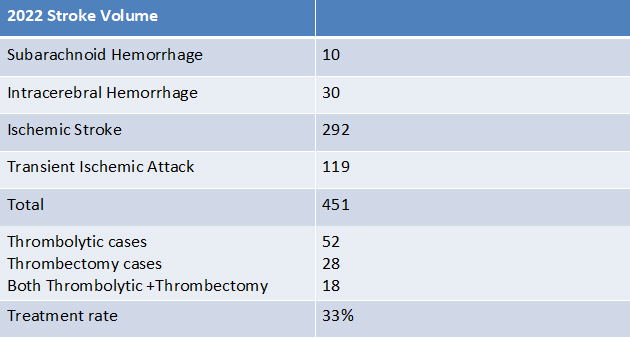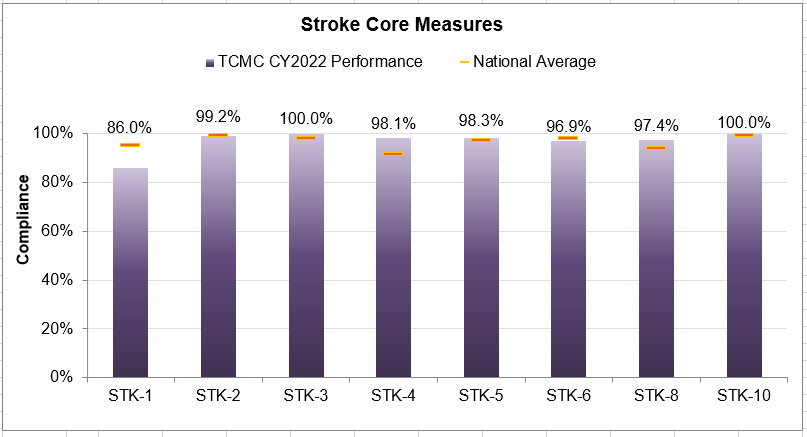Know the Signs of Stroke
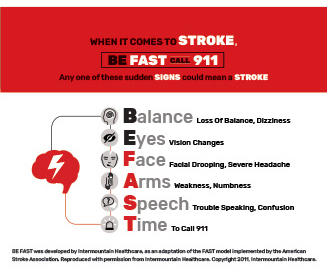
Proud Partners of the NIH StrokeNet

Stroke Facts – Did you know?
- Up to 80 percent of strokes are preventable.
- Stroke can happen to anyone at any time.
- There are nearly 7 million stroke survivors in the U.S.
- Stroke is the 5th leading cause of death in the U.S.
- Every 40 seconds someone in the U.S. has a stroke.
- Nearly 2 million brain cells die each minute a stroke goes untreated.
- About 185,00 strokes—nearly 1 of 4—are in people who have had a previous stroke.
- In 2009, 34% of people hospitalized for stroke were less than 65 years old.
High Quality Care with Excellent Patient Outcomes
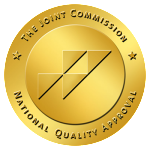 Tri-City Medical Center has earned the Gold Seal of Approval from the Joint Commission for Primary Stroke Centers. This two-year certification was awarded originally in 2007 and we have maintained the certification through 2020 because we demonstrated that our stroke care program follows national guidelines and standards that can significantly improve outcomes for stroke patients.This means that Tri-City Medical Center’s Stroke Care Center is a Certified Primary Stroke Center and that we provide the highest quality care to our patients.
Tri-City Medical Center has earned the Gold Seal of Approval from the Joint Commission for Primary Stroke Centers. This two-year certification was awarded originally in 2007 and we have maintained the certification through 2020 because we demonstrated that our stroke care program follows national guidelines and standards that can significantly improve outcomes for stroke patients.This means that Tri-City Medical Center’s Stroke Care Center is a Certified Primary Stroke Center and that we provide the highest quality care to our patients.
In 2020, Tri-City earned the The Joint Commission’s advanced stroke certification for Thrombectomy-Capable Stroke Centers (TSC) by meeting rigorous standards for performing endovascular thrombectomy (EVT).
Joint Commission reviewers evaluated compliance with related certification standards including:
-
- Demonstrate compliance with the new standards for TSC certification
- Meet the minimum mechanical thrombectomy volume requirement
- Demonstrate the ability to perform mechanical thrombectomy 24/7
- Maintain dedicated intensive care beds for acute ischemic stroke patients
- Meet the expectations for the availability of staff and practitioners closely aligned with Comprehensive Stroke Center Expectations
This certification recognizes Tri-City’s commitment to fostering continuous quality improvement in patient safety and quality of care. Joint Commission standards are developed in consultation with health care experts and providers, measurement experts and patients.
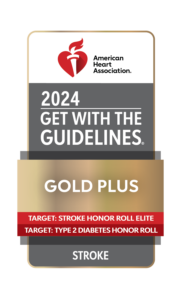 In addition, Tri-City was awarded the Get With The Guidelines® – Stroke Gold Plus Quality Achievement Award 2024 by the American Heart Association (AHA). Along with this recognition, Tri-City Medical Center the AHA’s Target: Stroke Honor Roll Elite Award and Target: Type 2 Diabetes Honor Roll Award, honoring hospitals that ensure patients with Type 2 diabetes, who might be at higher risk for complications, receive the most up-to-date, evidence-based care when hospitalized due to a stroke.
In addition, Tri-City was awarded the Get With The Guidelines® – Stroke Gold Plus Quality Achievement Award 2024 by the American Heart Association (AHA). Along with this recognition, Tri-City Medical Center the AHA’s Target: Stroke Honor Roll Elite Award and Target: Type 2 Diabetes Honor Roll Award, honoring hospitals that ensure patients with Type 2 diabetes, who might be at higher risk for complications, receive the most up-to-date, evidence-based care when hospitalized due to a stroke.
Tri-City & American Heart Association
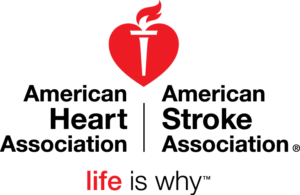 Tri-City Medical Center has partnered with the American Heart Association to increase heart health awareness across the North County region. This partnership will allow much needed heart-healthy resources and education to be invested across North County, making it easier for families to live longer and healthier lives.
Tri-City Medical Center has partnered with the American Heart Association to increase heart health awareness across the North County region. This partnership will allow much needed heart-healthy resources and education to be invested across North County, making it easier for families to live longer and healthier lives.
Clot Retrieval Treatment
Tri-City Medical Center also offers state of the art clot retrieval treatment by our Neuro-Interventional Radiology team. This technology allows doctors to pinpoint the exact location of blood clots and use drugs and/or mechanical tools to remove them.
- Multidisciplinary stroke care
- Rapid interpretation of brain scans
- 24 hour support by neurologists, neurosurgeons, interventional radiologists and other experts
- Stroke-reversing treatments, including clot-dissolving drugs and clot retrieval procedures
- Written Strict protocols for patient care and ongoing reporting
- Stroke education for patients and loved ones
- Good To Go driving program for stroke recovery
Stroke Quality Measures and Outcomes
Stroke is a medical emergency that requires rapid treatment — the more quickly you receive care, the better your chances of survival and long-term recovery. You can also reduce your risk of serious side effects, including permanent disabilities, by seeking care from hospitals that have proven their ability to manage even the most complex stroke cases.
Inpatient performance measures
TCMC utilizes evidence-based guidelines endorsed by The American Heart Association and American Stroke Association, to ensure all patients suffering from stroke receive appropriate care. At TCMC, we monitor our compliance with our stroke core measures as endorsed by The Joint Commission. The chart below highlights our consistent performance in exceeding standards.
More about stroke core measures
Stroke core measures include:
Venous thromboembolism (VTE) prophylaxis – The percentage of ischemic and hemorrhagic stroke patients who received a type of therapy to prevent blood clots the day of, or the day after, hospital admission.
Discharged on anti-thrombotic therapy – The percentage of ischemic stroke patients who were prescribed a type of blood thinning medication upon discharge from the hospital.
Number of patients prescribed anti-coagulation therapy for atrial fibrillation/flutter – The percentage of ischemic stroke patients diagnosed with a heart condition called atrial fibrillation, who were prescribed a blood thinning medication upon discharge from the hospital.
Thrombolytic therapy – Percentage of ischemic stroke patients who arrived at the hospital within two hours of stroke symptom onset, and were given a type of “clot-busting” medicine called intravenous tissue plasminogen activator (IV t-PA) within three hours of symptom onset.
Anti-thrombotic therapy by end of hospital day two – Percentage of ischemic stroke patients given a blood thinning medication by the end of their second day in the hospital.
Discharge on statin medication – Percentage of ischemic stroke patients who were prescribed a medication to lower cholesterol upon discharge from the hospital.
Stroke education – Percentage of ischemic or hemorrhagic stroke patients (or their caregivers) who were given stroke education materials during their hospital stay.
Assessed for rehabilitation – Percentage of ischemic or hemorrhagic stroke patients who were assessed for rehabilitation needs including physical therapy, occupational therapy, and speech or swallowing therapy.
Amount of time it takes to administer IV Alteplase (tPA) – Time is brain! Clinical practice guidelines recommend hospitals administer a type of clot-busting medicine called tPA to eligible ischemic stroke patients within 60 minutes of arrival.
TCMC has been recognized with the Target: Stroke Honor Roll and Target: Type 2 Diabetes Honor Roll award by the American Stroke Association for using thrombolytic therapy within 60 minutes in 75 percent or more of applicable acute ischemic stroke patients.
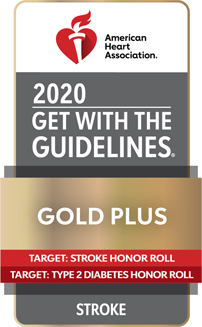
Effectiveness of endovascular procedures
Ischemic strokes are caused by a blockage in one of the arteries that supply blood to the brain. Patients with evidence of blockage in one of the major blood vessels in their brain, who present within the first six hours from the onset of their stroke, can be treated with a catheter-based approach. This endovascular treatment immediately restores blood flow, captures the blood clot and removes it from the blood vessel.
Thrombolysis in cerebral infarction (TICI), post-treatment reperfusion grade
Many hospitals use a scale called thrombolysis in cerebral infarction (TICI) to evaluate the success of endovascular treatments. The more open a blood vessel is following treatment, the more easily blood can flow through it.
In 2015, the Endovascular Stroke Standards Committee of the Society of Vascular and Interventional Neurology established the following national benchmark for hospitals: At least 50 percent of ischemic stroke patients who undergo endovascular treatment must achieve a TICI grade of “2b” or higher. This means the vessel completely fills with blood, even though the rate of blood flow may be slower than normal.
TICI Score >2b
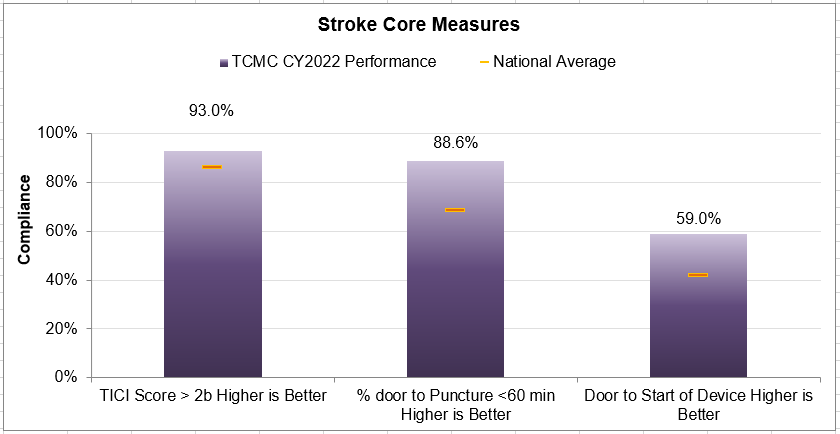
- Neurologists
- Stroke coordinator
- National Institute of Health (NIH) certified stroke nurses
- Stroke specialty care by physical, occupational, and speech therapists
- Benjamin M. Frishberg, MD – Neurology / Ophthalmology
- Irene Oh, MD – Neurology
- Remia S. Paduga, MD – Neurology
- Gregory A. Sahagian, MD – Neurology
- Jack Schim, MD – Neurology
- Anchi Wang, MD – Neurology
- Tyrone Hardy, MD – Neurosurgery
- Thomas Marcisz, MD – Neurosurgery
- Thomas Paul Nowak, MD – Neurosurgery
- Mark S. Stern, MD – Neurosurgery
- Frank Kevin Yoo, MD – Neurosurgery
- Michael Burke MD – Interventional Radiology
- Justin M Gooding, MD – Interventional Radiology
- Donald J. Ponec, MD – Interventional Radiology
- Richard R Saxon, MD – Interventional Radiology
- Mark N Sadoff, MD – Neurology

